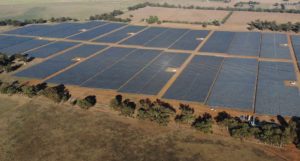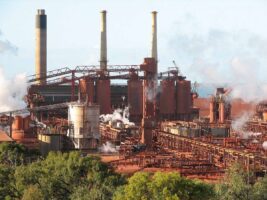Two companies that have found ways to store carbon dioxide in concrete – and so help solve two massive climate challenges – are the latest winners of the “XPrize“, a prestigious Los Angeles-based grant program backed by the likes of Google, Amazon and Elon Musk, that aims to harness cutting edge science and technology to solve the world’s biggest problems.
In its latest award, the $US20 million NRG COSIA Carbon XPrize, it has focused on the emissions created by concrete and cement. The two winning companies were Canadian company CarbonCure, which is already backed by Bill Gates and Amazon, and US company CarbonBuilt.
Both companies have developed technology that can inject carbon dioxide into concrete and store it there “for good”, reducing the carbon emissions of cement by up to 50 per cent.
It doesn’t get much air time next to fossil fuels, but cement, the binding ingredient in concrete, is one of the most carbon-intensive substances in the world, accounting for a 7-8 per cent of global CO2 emissions. That puts it roughly on a par with steelmaking.
Much of those emissions come from heating and transport using fossil fuels, but 50 per cent of the CO2 has nothing to do with fossil fuels. It comes from a process called “calcination”.
The most important ingredient in cement is “clinker”. Clinker is made by heating ground limestone (calcium carbonate, or CaCO3) at incredibly high temperatures, which splits the limestone into lime (calcium oxide – CaO) and carbon dioxide (CO2). In most cases, the CO2 then escapes into the atmosphere.
That’s CO2 that would otherwise have been safely stored in the ground for millions of years. Releasing it therefore adds to atmospheric CO2 concentrations, boosting the greenhouse effect and increasing global temperatures.
CarbonCure and CarbonBuilt’s technologies do not address the emissions from calcination directly. Instead, they focus on offsetting the carbon footprint of cement by permanently storing CO2 captured from any process (whether calcination, fossil fuel combustion or some other source) in concrete.
CarbonBuilt’s prototype uses flue gas CO2 taken from a coal-fired power station in Wyoming which it uses to cure concrete – a process it says does “not require expensive capture, compression or purification of the CO2”. It also limits the use of cement, so reducing the carbon footprint of the concrete by up to 50 per cent.
CarbonCure’s technology uses similar technology, explained here, to embed CO2 in concrete – a process which its says has the potential to reduce the carbon footprint of concrete by 20 per cent and make the concrete stronger than it would otherwise be.
CarbonCure president Jennifer Wagner said the winnings would help towards the company’s “mission” of reducing global emissions by 500 million tonnes a year by 2030 – an ambitious target given that was almost exactly Australia’s total annual emissions last year.
But in a comment that might rankle with Australia’s energy minister Angus Taylor who hopes to reduce Australia’s emissions exclusively using technology, she acknowledged technology alone would not get the industry to net zero.
“Concrete producers, the wider construction community, and policymakers are important allies on our journey to decarbonise the concrete industry,” she said.
According to UK think tank Chatham House, every year 10 billion tonnes of concrete are used, making it the second-most consumed substance on Earth after water. Cement with high clinker content can produce 0.93 kilograms of CO2 for every kilogram of cement.
In a detailed paper published in 2018, Chatham House examined a number of solutions to emissions from cement. Given 50 per cent of emissions are from thermal energy and transport, non-fossil fuel energy and transport can solve some of the problems, as can improved efficiency.
Emissions from calcination can be addressed firstly by using alternatives to clinker – it finds a 70 per cent substitution of clinker could reduce the emissions by 60 per cent – and secondly by carbon capture and storage.
While CCS is unlikely ever to be cost effective for electricity generation – renewables backed by carbon-free storage are already developing and reducing costs at a rate that would make most investments in CCS a waste of money – for cement it could play a more central role because there is no way of making clinker without producing CO2. If the captured CO2 could then be used in concrete manufacture, it could solve the problem of where to put that CO2.
But that would only answer some of the problems. Chatham House listed a number of daunting obstacles to the use of CCS in cement manufacture, showing carbon-free concrete is one of the more wicked problems the world faces on the road to net zero.
“The cement industry has engaged in several projects to develop CCS. However, as in other sectors, development has been slow. Most CCS technologies are still at the basic research or demonstration stage. One of the main barriers so far has been cost,” the report says.
“Several countries also lack an adequate legal framework for CO2 storage. Finally, the lack of geographic clustering is a problem. Most cement plants are too small to justify by themselves the construction of the necessary distribution infrastructure for captured CO2. This is not a problem where they are clustered with other industrial sources of CO2, but many may not be suitably located.”










